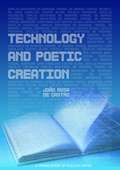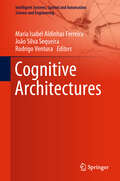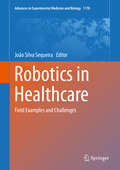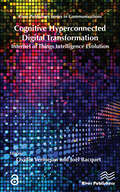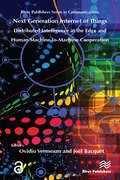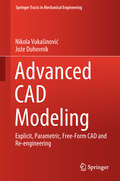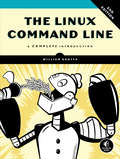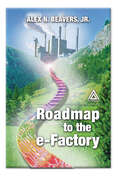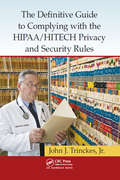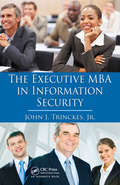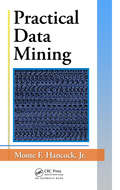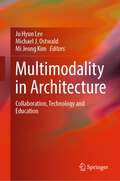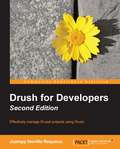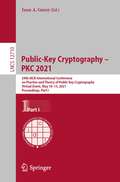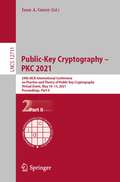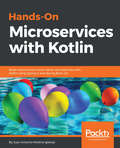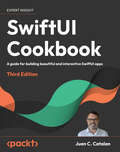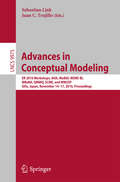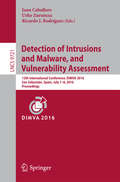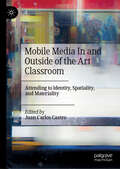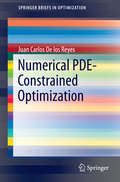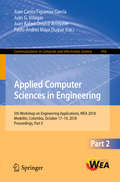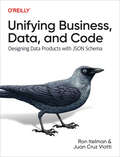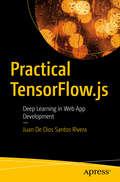- Table View
- List View
Technology And Poetic Creation
by João Rosa de CastroAn attempt to answer the question of scientific initiation: "can technological instruments change the meaning of poet and poetry?" Technology and poetic creation The objective of this work is to present, as much as possible, the network of relationships of technology and poetic composition, and was proposed in the Scientific Initiation program of the CCHSAE (Center for Human and Social Sciences, Arts and Education) at the Cruzeiro do Sul University, in 2003. Although these relations seem recent, due to the growing development of technologies, in the 20th century, the conclusions demonstrate that technology has always been present, in some way, as an extension of human activities. This indisputable presence starts from the need for technology for Education, Health and Politics, as a factor of social and digital inclusion, from the pencil, through the technological resources in the processes of artistic and cultural production, such as, for example, holography, reaching the electronic literary hypertext, where it finds its peak in Literature. The method of this research is predominantly inductive, with the characterization of facts and the establishment of principles and concepts, in the relations of individuals with technological instruments to improve the quality of poetic creation. The result is the deconstruction of oppositions, such as art x technology, technology x sensitivity, technology x creation; in a perception of how technological instruments, used in a coherent way, that is, as an extension of human action, and not the other way around, can be prime for the transformation of paradigms in the interpretation of reality or in the composition of their portraits. It is concluded, therefore, that despite this extension, often controversial, as it may suggest inertia itself, it is still up to humanity, being composed of cooperative individuals, regardless of the technological resources at hand, their socio-cultural impro
Cognitive Architectures (Intelligent Systems, Control and Automation: Science and Engineering #94)
by Maria Isabel Aldinhas Ferreira João Silva Sequeira Rodrigo VenturaThis book provides an integrated framework for natural and artificial cognition by highlighting the fundamental role played by the cognitive architecture in the dialectics with the surrounding environment and consequently in the definition of a particular meaningful world.This book is also about embodied and non-embodied artificial systems, cognitive architectures that are human constructs, meant to be able to populate the human world, capable of identifying different life contexts and replicating human patterns of behavior capable of acting according to human values and conventions, systems that perform tasks in a human-like way. By identifying the essential phenomena at the core of all forms of cognition, the book addresses the topic of design of artificial cognitive architectures in the domains of robotics and artificial life. Moving from mere bio-inspired design methodology it aims to open a pathway to semiotically determined design.
Robotics in Healthcare: Field Examples and Challenges (Advances in Experimental Medicine and Biology #1170)
by João Silva SequeiraThe work is a collection of contributions resulting from R&D efforts originated from scientific projects involving academia, technological partners, and end-user institutions. The aim is to provide a comprehensive overview of robotics technology applied to Healthcare, and discuss the anticipation of upcoming challenges.The intersection of Robotics and Medicine includes socially and economically relevant areas, such as rehabilitation, therapy, and healthcare. Innovative usages of current robotics technologies are being somewhat stranded by concerns related to social dynamics. The examples covered in this volume show some of the potential societal benefits robotics can bring and how the robots are being integrated in social environments.Despite the aforementioned concerns, a fantastic range of possibilities is being opened. The current trend in social robotics adds to technology challenges and requires R&D to think about Robotics as an horizontal discipline, intersecting social and exact sciences. For example, robots that can act as if they have credible personalities (not necessarily similar to humans) living in social scenarios, eventually helping people. Also, robots can move inside the human body to retrieve information that otherwise is difficult to obtain. The decision autonomy of these robots raises a broad range of subjects though the immediate advantages of its use are evident.The book presents examples of robotics technologies tested in healthcare environments or realistically close to being deployed in the field and discusses the challenges involved. Chapter 1 provides a comprehensive overview of Healthcare robotics and points to realistically expectable developments in the near future. Chapter 2 describes the challenges deploying a social robot in the Pediatrics ward of an Oncological hospital for simple edutainment activities. Chapter 3 focuses on Human-Robot Interaction techniques and their role in social robotics. Chapter 4 focus on R&D efforts behind an endoscopic capsule robot. Chapter 5 addresses experiments in rehabilitation with orthotics and walker robots. These examples have deep social and economic relations with the Healthcare field, and, at the same time, are representative of the R&D efforts the robotics community is developing.
Cognitive Hyperconnected Digital Transformation: Internet of Things Intelligence Evolution
by Ovidiu Vermesan Joël BacquetCognitive Hyperconnected Digital Transformation provides an overview of the current Internet of Things (IoT) landscape, ranging from research, innovation and development priorities to enabling technologies in a global context. It is intended as a standalone book in a series that covers the Internet of Things activities of the IERC-Internet of Things European Research Cluster, including both research and technological innovation, validation and deployment. The book builds on the ideas put forward by the European Research Cluster, the IoT European Platform Initiative (IoT-EPI) and the IoT European Large-Scale Pilots Programme, presenting global views and state-of-the-art results regarding the challenges facing IoT research, innovation, development and deployment in the next years. Hyperconnected environments integrating industrial/business/consumer IoT technologies and applications require new IoT open systems architectures integrated with network architecture (a knowledge-centric network for IoT), IoT system design and open, horizontal and interoperable platforms managing things that are digital, automated and connected and that function in real-time with remote access and control based on Internet-enabled tools. The IoT is bridging the physical world with the virtual world by combining augmented reality (AR), virtual reality (VR), machine learning and artificial intelligence (AI) to support the physical-digital integrations in the Internet of mobile things based on sensors/actuators, communication, analytics technologies, cyber-physical systems, software, cognitive systems and IoT platforms with multiple functionalities. These IoT systems have the potential to understand, learn, predict, adapt and operate autonomously. They can change future behaviour, while the combination of extensive parallel processing power, advanced algorithms and data sets feed the cognitive algorithms that allow the IoT systems to develop new services and propose new solutions. IoT technologies are moving into the industrial space and enhancing traditional industrial platforms with solutions that break free of device-, operating system- and protocol-dependency. Secure edge computing solutions replace local networks, web services replace software, and devices with networked programmable logic controllers (NPLCs) based on Internet protocols replace devices that use proprietary protocols. Information captured by edge devices on the factory floor is secure and accessible from any location in real time, opening the communication gateway both vertically (connecting machines across the factory and enabling the instant availability of data to stakeholders within operational silos) and horizontally (with one framework for the entire supply chain, across departments, business units, global factory locations and other markets). End-to-end security and privacy solutions in IoT space require agile, context-aware and scalable components with mechanisms that are both fluid and adaptive. The convergence of IT (information technology) and OT (operational technology) makes security and privacy by default a new important element where security is addressed at the architecture level, across applications and domains, using multi-layered distributed security measures. Blockchain is transforming industry operating models by adding trust to untrusted environments, providing distributed security mechanisms and transparent access to the information in the chain. Digital technology platforms are evolving, with IoT platforms integrating complex information systems, customer experience, analytics and intelligence to enable new capabilities and business models for digital business.
Next Generation Internet of Things – Distributed Intelligence at the Edge and Human-Machine Interactions
by Ovidiu Vermesan Joël BacquetThis book provides an overview of the next generation Internet of Things (IoT), ranging from research, innovation, development priorities, to enabling technologies in a global context. It is intended as a standalone in a series covering the activities of the Internet of Things European Research Cluster (IERC), including research, technological innovation, validation, and deployment.The following chapters build on the ideas put forward by the European Research Cluster, the IoT European Platform Initiative (IoT–EPI), the IoT European Large-Scale Pilots Programme and the IoT European Security and Privacy Projects, presenting global views and state-of-the-art results regarding the next generation of IoT research, innovation, development, and deployment.The IoT and Industrial Internet of Things (IIoT) are evolving towards the next generation of Tactile IoT/IIoT, bringing together hyperconnectivity (5G and beyond), edge computing, Distributed Ledger Technologies (DLTs), virtual/ andaugmented reality (VR/AR), and artificial intelligence (AI) transformation.Following the wider adoption of consumer IoT, the next generation of IoT/IIoT innovation for business is driven by industries, addressing interoperability issues and providing new end-to-end security solutions to face continuous treats.The advances of AI technology in vision, speech recognition, natural language processing and dialog are enabling the development of end-to-end intelligent systems encapsulating multiple technologies, delivering services in real-time using limited resources. These developments are focusing on designing and delivering embedded and hierarchical AI solutions in IoT/IIoT, edge computing, using distributed architectures, DLTs platforms and distributed end-to-end security, which provide real-time decisions using less data and computational resources, while accessing each type of resource in a way that enhances the accuracy and performance of models in the various IoT/IIoT applications.The convergence and combination of IoT, AI and other related technologies to derive insights, decisions and revenue from sensor data provide new business models and sources of monetization. Meanwhile, scalable, IoT-enabled applications have become part of larger business objectives, enabling digital transformation with a focus on new services and applications.Serving the next generation of Tactile IoT/IIoT real-time use cases over 5G and Network Slicing technology is essential for consumer and industrial applications and support reducing operational costs, increasing efficiency and leveraging additional capabilities for real-time autonomous systems.New IoT distributed architectures, combined with system-level architectures for edge/fog computing, are evolving IoT platforms, including AI and DLTs, with embedded intelligence into the hyperconnectivity infrastructure.The next generation of IoT/IIoT technologies are highly transformational, enabling innovation at scale, and autonomous decision-making in various application domains such as healthcare, smart homes, smart buildings, smart cities, energy, agriculture, transportation and autonomous vehicles, the military, logistics and supply chain, retail and wholesale, manufacturing, mining and oil and gas.
Advanced CAD Modeling: Explicit, Parametric, Free-form Cad And Re-engineering (Springer Tracts in Mechanical Engineering)
by Jože Duhovnik Nikola VukašinovićThe book discusses the theoretical fundamentals of CAD graphics to enhance readers’ understanding of surface modeling and free-form design by demonstrating how to use mathematical equations to define curves and surfaces in CAD modelers. Additionally, it explains and describes the main approaches to creating CAD models out of 3D scans of physical objects. All CAD approaches are demonstrated with guided examples and supported with comprehensive engineering explanations. Furthermore, each approach includes exercises for independent consolidation of advanced CAD skills. This book is intended for engineers and designers who are already familiar with the basics of modern CAD tools, e.g. feature based and solid based modeling in 3D space, and would like to improve and expand their knowledge and experience. It is also an easy-to use guide and excellent teaching and research aid for academics and practitioners alike.
The Linux Command Line: A Complete Introduction
by Jr. William E. ShottsYou've experienced the shiny, point-and-click surface of your Linux computer--now dive below and explore its depths with the power of the command line.The Linux Command Line takes you from your very first terminal keystrokes to writing full programs in Bash, the most popular Linux shell (or command line). Along the way you'll learn the timeless skills handed down by generations of experienced, mouse-shunning gurus: file navigation, environment configuration, command chaining, pattern matching with regular expressions, and more.In addition to that practical knowledge, author William Shotts reveals the philosophy behind these tools and the rich heritage that your desktop Linux machine has inherited from Unix supercomputers of yore.As you make your way through the book's short, easily-digestible chapters, you'll learn how to: * Create and delete files, directories, and symlinks * Administer your system, including networking, package installation, and process management * Use standard input and output, redirection, and pipelines * Edit files with Vi, the world's most popular text editor * Write shell scripts to automate common or boring tasks * Slice and dice text files with cut, paste, grep, patch, and sedOnce you overcome your initial "shell shock," you'll find that the command line is a natural and expressive way to communicate with your computer. Just don't be surprised if your mouse starts to gather dust.
Roadmap to the E-Factory
by Jr., Alex BeaversAs manufacturing control systems converge with manufacturing automation systems and systems supporting the back office, IT managers in manufacturing companies are being asked to oversee all their company's IT-including the manufacturing systems. Roadmap to the E-Factory explains what the IT manager needs to know about these unfamiliar systems. It discusses the information value chain, a concept which demonstrates how all computing resources contribute to the success of a manufacturing organization. The material also demonstrates the strategic value of IT, and it includes recommendations for managing the computing resources of a global manufacturing enterprise. An authoritative text on IT, manufacturing, and control systems, Roadmap to the E-Factory provides detailed information on: e-companies e-commerce o Lean manufacturing Supply chain management ERP Operations Emerging trends In addition to helping you gain a basic understanding of manufacturing systems, Roadmap to the E-Factory shows you how IT systems can most effectively support these systems and provides you with a set of recommendations that enables you to derive maximum benefit from them.
The Definitive Guide to Complying with the HIPAA/HITECH Privacy and Security Rules
by Jr., John TrinckesThe Definitive Guide to Complying with the HIPAA/HITECH Privacy and Security Rules is a comprehensive manual to ensuring compliance with the implementation standards of the Privacy and Security Rules of HIPAA and provides recommendations based on other related regulations and industry best practices. The book is designed to assist you in reviewing the accessibility of electronic protected health information (EPHI) to make certain that it is not altered or destroyed in an unauthorized manner, and that it is available as needed only by authorized individuals for authorized use. It can also help those entities that may not be covered by HIPAA regulations but want to assure their customers they are doing their due diligence to protect their personal and private information. Since HIPAA/HITECH rules generally apply to covered entities, business associates, and their subcontractors, these rules may soon become de facto standards for all companies to follow. Even if you aren't required to comply at this time, you may soon fall within the HIPAA/HITECH purview. So, it is best to move your procedures in the right direction now. The book covers administrative, physical, and technical safeguards; organizational requirements; and policies, procedures, and documentation requirements. It provides sample documents and directions on using the policies and procedures to establish proof of compliance. This is critical to help prepare entities for a HIPAA assessment or in the event of an HHS audit. Chief information officers and security officers who master the principles in this book can be confident they have taken the proper steps to protect their clients' information and strengthen their security posture. This can provide a strategic advantage to their organization, demonstrating to clients that they not only care about their health and well-being, but are also vigilant about protecting their clients' privacy.
The Executive MBA in Information Security
by Jr., John TrinckesAccording to the Brookings Institute, an organization's information and other intangible assets account for over 80 percent of its market value. As the primary sponsors and implementers of information security programs, it is essential for those in key leadership positions to possess a solid understanding of the constantly evolving fundamental conc
Practical Data Mining
by Jr., Monte HancockUsed by corporations, industry, and government to inform and fuel everything from focused advertising to homeland security, data mining can be a very useful tool across a wide range of applications. Unfortunately, most books on the subject are designed for the computer scientist and statistical illuminati and leave the reader largely adrift in tech
Multimodality in Architecture: Collaboration, Technology and Education
by Michael J. Ostwald Ju Hyun Lee Mi Jeong KimThis book examines multimodality in architecture and its impacts on collaborative, technical and educational processes or systems. Multimodality is becoming increasingly critical in contemporary architectural practice and education. Creative design teams face new challenges when they embrace new modes of communication, technology, and knowledge development processes. From diverse online modes of communication to shared digital environments, generative AI and advanced hardware solutions, new modes of information creation, sharing, and application are changing the ways architects and designers work.The book presents new research which empowers international researchers and designers to work more effectively in a diverse range of digital environments.Whether the readers are architects, teachers, students, or scholars, this book provides critical insights and practical tools for understanding and optimising processes in architecture and design.
Drush for Developers - Second Edition
by Juampy Novillo RequenaThis book is a best fit for backend developers with a basic knowledge of Drupal's APIs and some experience using the command line. Perhaps you already worked on one or two Drupal projects, but have never dived deep into Drush's toolset. In any case, this book will give you a lot of advice by covering real-world challenges in Drupal projects that can be solved using Drush.
Public-Key Cryptography – PKC 2021: 24th IACR International Conference on Practice and Theory of Public Key Cryptography, Virtual Event, May 10–13, 2021, Proceedings, Part I (Lecture Notes in Computer Science #12710)
by Juan A. GarayThe two-volume proceedings set LNCS 12710 and 12711 constitutes the proceedings of the 24th IACR International Conference on Practice and Theory of Public Key Cryptography, PKC 2021, which was held online during May 10-13, 2021. The conference was originally planned to take place in Edinburgh, UK, but had to change to an online format due to the COVID-19 pandemic.The 52 papers included in these proceedings were carefully reviewed and selected from 156 submissions. They focus on all aspects of public-key cryptography, covering theory, implementations and applications. This year, post-quantum cryptography, PQC constructions and cryptanalysis received special attention.
Public-Key Cryptography – PKC 2021: 24th IACR International Conference on Practice and Theory of Public Key Cryptography, Virtual Event, May 10–13, 2021, Proceedings, Part II (Lecture Notes in Computer Science #12711)
by Juan A. GarayThe two-volume proceedings set LNCS 12710 and 12711 constitutes the proceedings of the 24th IACR International Conference on Practice and Theory of Public Key Cryptography, PKC 2021, which was held online during May 10-13, 2021. The conference was originally planned to take place in Edinburgh, UK, but had to change to an online format due to the COVID-19 pandemic.The 52 papers included in these proceedings were carefully reviewed and selected from 156 submissions. They focus on all aspects of public-key cryptography, covering theory, implementations and applications. This year, post-quantum cryptography, PQC constructions and cryptanalysis received special attention.
Hands-On Microservices with Kotlin: Build reactive and cloud-native microservices with Kotlin using Spring 5 and Spring Boot 2.0
by Juan Antonio Medina IglesiasBuild smart, efficient, and fast enterprise-grade web implementation of the microservices architecture that can be easily scaled. Key Features Write easy-to-maintain lean and clean code with Kotlin for developing better microservices Scale your Microserivces in your own cloud with Docker and Docker Swarm Explore Spring 5 functional reactive web programming with Spring WebFlux Book Description With Google's inclusion of first-class support for Kotlin in their Android ecosystem, Kotlin's future as a mainstream language is assured. Microservices help design scalable, easy-to-maintain web applications; Kotlin allows us to take advantage of modern idioms to simplify our development and create high-quality services. With 100% interoperability with the JVM, Kotlin makes working with existing Java code easier. Well-known Java systems such as Spring, Jackson, and Reactor have included Kotlin modules to exploit its language features. This book guides the reader in designing and implementing services, and producing production-ready, testable, lean code that's shorter and simpler than a traditional Java implementation. Reap the benefits of using the reactive paradigm and take advantage of non-blocking techniques to take your services to the next level in terms of industry standards. You will consume NoSQL databases reactively to allow you to create high-throughput microservices. Create cloud-native microservices that can run on a wide range of cloud providers, and monitor them. You will create Docker containers for your microservices and scale them. Finally, you will deploy your microservices in OpenShift Online. What you will learn Understand microservice architectures and principles Build microservices in Kotlin using Spring Boot 2.0 and Spring Framework 5.0 Create reactive microservices that perform non-blocking operations with Spring WebFlux Use Spring Data to get data reactively from MongoDB Test effectively with JUnit and Kotlin Create cloud-native microservices with Spring Cloud Build and publish Docker images of your microservices Scaling microservices with Docker Swarm Monitor microservices with JMX Deploy microservices in OpenShift Online Who this book is for If you are a Kotlin developer with a basic knowledge of microservice architectures and now want to effectively implement these services on enterprise-level web applications, then this book is for you
SwiftUI Cookbook: A guide for building beautiful and interactive SwiftUI apps
by Juan C. CatalanExperience the potential of SwiftUI, Swift 5.9, and Xcode 15 for crafting cutting-edge apps on iOS 17, macOS 14.0 Sonoma, and watchOS 10Key FeaturesUnlock advanced controls and animations with SwiftUI 5, taking your app development skills to the next levelVisualize data effortlessly using Swift Charts enhancing your app's data-driven capabilitiesDevelop for multiple platforms, including iOS, macOS, and watchOS, and become a versatile app developerPurchase of the print or Kindle book includes a free PDF eBookBook DescriptionSwiftUI is the modern way to build user interfaces for iOS, macOS, and watchOS. It provides a declarative and intuitive way to create beautiful and interactive user interfaces. The new edition of this comprehensive cookbook includes a fully updated repository for SwiftUI 5, iOS 17, Xcode 15, and Swift 5.9. With this arsenal, it teaches you everything you need to know to build beautiful and interactive user interfaces with SwiftUI 5, from the basics to advanced topics like custom modifiers, animations, and state management. In this new edition, you will dive into the world of creating powerful data visualizations with a new chapter on Swift Charts and how to seamlessly integrate charts into your SwiftUI apps. Further, you will be able to unleash your creativity with advanced controls, including multi-column tables and two-dimensional layouts. You can explore new modifiers for text, images, and shapes that give you more control over the appearance of your views. You will learn how to develop apps for multiple platforms, including iOS, macOS, watchOS, and more. With expert insights, real-world examples, and a recipe-based approach, you’ll be equipped to build remarkable SwiftUI apps that stand out in today’s competitive market.What you will learnCreate stunning, user-friendly apps for iOS 17, macOS 14, and watchOS 10 with SwiftUI 5Use the advanced preview capabilities of Xcode 15Use async/await to write concurrent and responsive codeCreate powerful data visualizations with Swift ChartsEnhance user engagement with modern animations and transitionsImplement user authentication using Firebase and Sign in with AppleLearn about advanced topics like custom modifiers, animations, and state managementBuild multi-platform apps with SwiftUIWho this book is forThis book is for mobile developers who want to learn SwiftUI as well as experienced iOS developers transitioning from UIKit to SwiftUI. The book assumes knowledge of the Swift programming language. Knowledge of object-oriented design and data structures will be useful but not necessary. You'll also find this book to be a helpful resource if you're looking for reference material regarding the implementation of various features in SwiftUI.
Advances in Conceptual Modeling: ER 2016 Workshops, AHA, MoBiD, MORE-BI, MReBA, QMMQ, SCME, and WM2SP, Gifu, Japan, November 14–17, 2016, Proceedings (Lecture Notes in Computer Science #9975)
by Sebastian Link Juan C. TrujilloThis book constitutes the refereed proceedings of seven workshops and a symposium, held at the 35th International Conference on Conceptual Modeling, ER 2016, in Gifu, Japan. The 19 revised full and 3 keynote papers were carefully reviewed and selected out of 52 submissions to the following events: Conceptual Modeling for Ambient Assistance and Healthy Ageing, AHA 2016; Modeling and Management of Big Data, MoBiD 2016; Modeling and Reasoning for Business Intelligence, MORE-BI 2016; Conceptual Modeling in Requirements and Business Analysis, MREBA 2016; Quality of Models and Models of Quality, QMMQ 2016; and the Symposium on Conceptual Modeling Education, SCME 2016; and Models and Modeling on Security and Privacy, WM2SP 2016.
Detection of Intrusions and Malware, and Vulnerability Assessment
by Juan Caballero Urko Zurutuza Ricardo J. RodríguezThis book constitutes the refereed proceedings of the 13th International Conference on Detection of Intrusions and Malware, and Vulnerability Assessment, DIMVA 2016, held in San Sebastián, Spain, in July 2016. The 19 revised full papers and 2 extended abstracts presented were carefully reviewed and selected from 66 submissions. They present the state of the art in intrusion detection, malware analysis, and vulnerability assessment, dealing with novel ideas, techniques, and applications in important areas of computer security including vulnerability detection, attack prevention, web security, malware detection and classification, authentication, data leakage prevention, and countering evasive techniques such as obfuscation.
Detection of Intrusions and Malware, and Vulnerability Assessment: 13th International Conference, DIMVA 2016, San Sebastián, Spain, July 7-8, 2016, Proceedings (Lecture Notes in Computer Science #9721)
by Juan Caballero, Urko Zurutuza and Ricardo J. RodríguezThis book constitutes the refereed proceedings of the 13th International Conference on Detection of Intrusions and Malware, and Vulnerability Assessment, DIMVA 2016, held in San Sebastián, Spain, in July 2016. The 19 revised full papers and 2 extended abstracts presented were carefully reviewed and selected from 66 submissions. They present the state of the art in intrusion detection, malware analysis, and vulnerability assessment, dealing with novel ideas, techniques, and applications in important areas of computer security including vulnerability detection, attack prevention, web security, malware detection and classification, authentication, data leakage prevention, and countering evasive techniques such as obfuscation.
Mobile Media In and Outside of the Art Classroom: Attending to Identity, Spatiality, and Materiality
by Juan Carlos CastroThis edited volume explores a range of educational effects on student learning that resulted from a long-term study using a creative visual arts curriculum designed for mobile media (smartphones and tablets) and used in art classrooms. The curriculum, entitled MonCoin, a French phrase meaning My Corner, was initially designed and piloted in a Montreal area school for at-risk youth in 2012. Since then, it has been refined, deployed, and researched across secondary schools from a range of socio-cultural educational contexts. This book is comprised of contributions from researchers and practitioners associated with the MonCoin project who address critical insights gleaned from our study, such as the social context of teen mobile media use; curriculum theory and design; influences of identity on creative practice; and specific strategies for creative applications of mobile media in schools. The purpose of this edited book is to offer art education researchers and teachers innovative curriculum for mobile media and the networked conditions that influence identity, space, and practice with and through this ubiquitous technology.
Numerical PDE-Constrained Optimization
by Juan Carlos De los ReyesThis book introduces, in an accessible way, the basic elements of Numerical PDE-Constrained Optimization, from the derivation of optimality conditions to the design of solution algorithms. Numerical optimization methods in function-spaces and their application to PDE-constrained problems are carefully presented. The developed results are illustrated with several examples, including linear and nonlinear ones. In addition, MATLAB codes, for representative problems, are included. Furthermore, recent results in the emerging field of nonsmooth numerical PDE constrained optimization are also covered. The book provides an overview on the derivation of optimality conditions and on some solution algorithms for problems involving bound constraints, state-constraints, sparse cost functionals and variational inequality constraints.
Applied Computer Sciences in Engineering: 5th Workshop on Engineering Applications, WEA 2018, Medellín, Colombia, October 17-19, 2018, Proceedings, Part II (Communications in Computer and Information Science #916)
by Juan Carlos Figueroa-García Juan G. Villegas Juan Rafael Orozco-Arroyave Pablo Andres Maya DuqueThis two-volume set (CCIS 915 and CCIS 916) constitutes the refereed proceedings of the 5th Workshop on Engineering Applications, WEA 2018, held in Medellín, Colombia, in October 2018. The 41 revised full papers presented in this volume were carefully reviewed and selected from 101 submissions. The papers are organized in topical sections such as green logistics and optimization, Internet of Things (IoT), digital signal processing (DSP), network applications, miscellaneous applications.
Unifying Business, Data, and Code: Designing Data Products with JSON Schema
by Ron Itelman Juan Cruz ViottiIn the modern symphony of business, each section-from the technical to the managerial-must play in harmony. Authors Ron Itelman and Juan Cruz Viotti introduce a bold methodology to synchronize your business and technical teams, transforming them into a single, high-performing unit. Misalignment between business and technical teams halts innovation. You'll learn how to transcend the root causes of project failure-the ambiguity, knowledge gaps, and blind spots that lead to wasted efforts. The unifying methodology in this book will teach you these alignment tools and more: The four facets of data products: A simple blueprint that encapsulates data and business logic helps eliminate the most common causes of wasted time and misunderstandingThe concept compass: An easy way to identify the biggest sources of misalignmentSuccess spectrums: Define the required knowledge and road map your team needs to achieve successJSON Schema: Leverage JSON and JSON Schema to technically implement the strategy at scale, including extending JSON Schema with custom keywords, understanding JSON Schema annotations, and hosting your own schema registryData hygiene: Learn how to design high-quality datasets aligned with creating real business value, and protect your organization from the most common sources of pain
Practical TensorFlow.js: Deep Learning in Web App Development
by Juan De RiveraDevelop and deploy deep learning web apps using the TensorFlow.js library. TensorFlow.js is part of a bigger framework named TensorFlow, which has many tools that supplement it, such as TensorBoard, ml5js, tfjs-vis. This book will cover all these technologies and show they integrate with TensorFlow.js to create intelligent web apps.The most common and accessible platform users interact with everyday is their web browser, making it an ideal environment to deploy AI systems. TensorFlow.js is a well-known and battle-tested library for creating browser solutions. Working in JavaScript, the so-called language of the web, directly on a browser, you can develop and serve deep learning applications.You'll work with deep learning algorithms such as feedforward neural networks, convolutional neural networks (CNN), recurrent neural networks (RNN), and generative adversarial network (GAN). Through hands-on examples, apply these networks in use cases related to image classification, natural language processing, object detection, dimensionality reduction, image translation, transfer learning, and time series analysis.Also, these topics are very varied in terms of the kind of data they use, their output, and the training phase. Not everything in machine learning is deep networks, there is also what some call shallow or traditional machine learning. While TensorFlow.js is not the most common place to implement these, you'll be introduce them and review the basics of machine learning through TensorFlow.js.What You'll LearnBuild deep learning products suitable for web browsersWork with deep learning algorithms such as feedforward neural networks, convolutional neural networks (CNN), recurrent neural networks (RNN), and generative adversarial network (GAN)Develop apps using image classification, natural language processing, object detection, dimensionality reduction, image translation, transfer learning, and time series analysisWho This Book Is For Programmers developing deep learning solutions for the web and those who want to learn TensorFlow.js with at least minimal programming and software development knowledge. No prior JavaScript knowledge is required, but familiarity with it is helpful.
